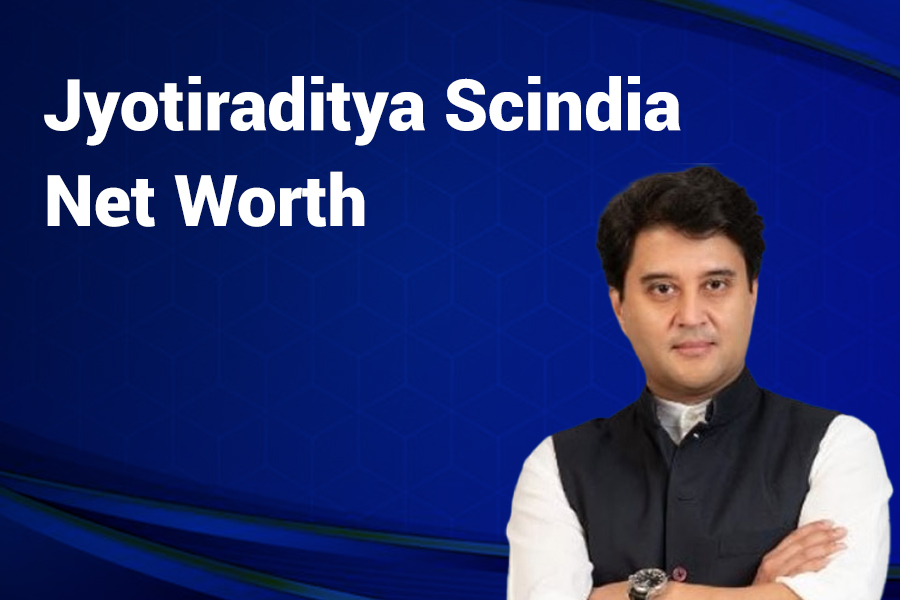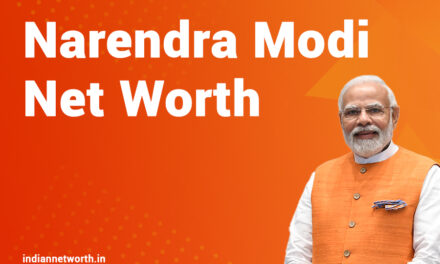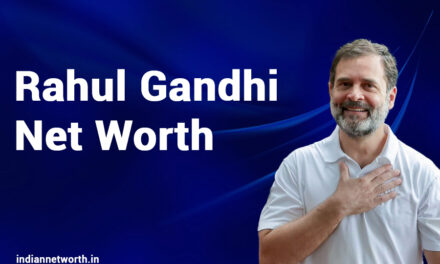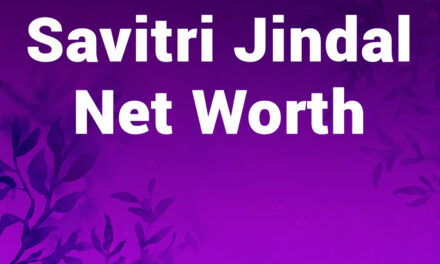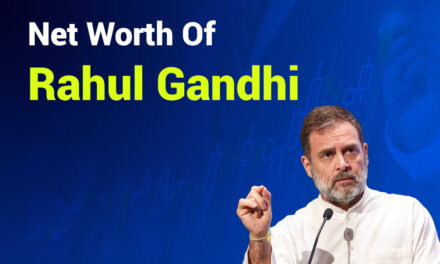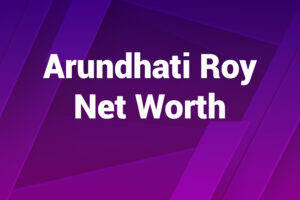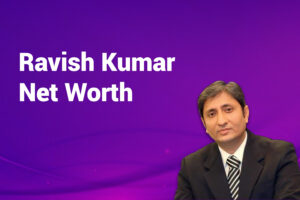Jyotiraditya Scindia stands among India’s wealthiest politicians. His asset declarations show large holdings across movable assets, immovable property, investments and ancestral wealth held through an HUF.
Over the last decade his declared net worth has grown and it has attracted media attention during elections and cabinet appointments. This article unpacks the numbers, traces their sources, explains differences between filings, and offers a clean, citation-backed view for journalists, researchers, and curious readers.
Why his net worth matters
Scindia carries a high public profile. He served in major ministries and contested national elections. Wealth disclosures shape public debate on transparency, political finance, and representation. They also matter for journalists tracking inequality among candidates and for voters who want clarity about conflicts of interest.
Biography in one paragraph (context for the money)
Jyotiraditya Madhavrao Scindia hails from a prominent Maratha royal family. He studied at elite institutions and completed an MBA at Stanford. He entered politics in the early 2000s, served as a Lok Sabha MP from Guna, later moved to the Rajya Sabha, and became a Union minister in multiple portfolios. Political roles, inherited family assets, and private investments jointly explain the scale and composition of his declared wealth.
The headline numbers — what each source reports
PMIndia affidavit (as of March 31, 2021)
The PMO-hosted affidavit lists itemized holdings for Jyotiraditya M. Scindia, his spouse, and the HUF (Hindu Undivided Family). The document reports the following headline totals for that filing:
- Movable assets (self): ₹3,45,81,514.
- Residential immovable (self): ₹31,97,70,000.
- HUF movable investments and assets: ₹47,22,77,284.
- HUF immovable property: ₹2,97,00,48,500.
- Liabilities: largely recorded as nil for self and HUF in that filing.
Those entries show a mix of personal and ancestral holdings. The HUF component alone lists very large historical land and property valuations.
MyNeta ( affidavit summary)
MyNeta aggregates and republishes election affidavits. Its summary for Scindia shows a different aggregated total, reflecting the same data expressed differently and sometimes updated for the election cycle:
- Total assets (MyNeta summary): approximately ₹379.03 crore (₹3,79,03,29,144).
- Liabilities (MyNeta): approximately ₹34.26 lakh (₹34,26,215).
- Declared income (ITR snapshot FY 2018–19): total income for self roughly ₹1.57 crore (₹1,57,48,100).
MyNeta lists detailed bank balances, securities, and investments line by line. The platform helps reformat affidavit tables into accessible totals.
ADR / ET Now (Elections 2024 coverage)
An ADR/ET Now compilation placed Scindia’s total assets at about ₹424 crore in early 2024. ADR split the figure as:
- Movable assets: ₹62,57,63,478.
- Immovable assets: ₹3,62,17,30,600.
ADR also compared candidates in the same election phase and positioned Scindia among the highest-net-worth contestants. Differences versus the PMO/MyNeta numbers reflect the choice of which filings to include, rounding, and whether HUF or ancestral valuations get counted in the same way.
Business Standard (profile and timeline)
Business Standard provides career and policy context; it reports Scindia’s ministerial roles and recent parliamentary status. The outlet corroborates that the subject holds significant assets and that his political and family background explains much of the asset mix. Use Business Standard for career timeline, not for raw affidavit math.
Detailed breakdown — movable assets
Movable assets include:
- Bank balances and fixed deposits. The affidavits list bank accounts and sizable deposits. MyNeta shows aggregated bank balances in the tens of crores — for example UBI and other bank holdings total over ₹20 crore in specific entries.
- Mutual funds, shares and bonds. The declarations itemize mutual fund units and listed/unlisted shares. Aggregates run into several crores.
- Vehicles and collectibles. The PMIndia PDF lists vehicles and a vintage car entry. Some items show nominal valuations.
- Jewellery. The filings include weights and estimated values for jewellery held by family members and HUF. The values contribute to the movable totals.
These entries come from the declared affidavits. Filers list each account or asset with values; aggregators then sum those lines into the totals reported above.
Detailed breakdown — immovable property
Immovable assets form the largest share of declared wealth.
- Personal residential properties. The affidavit lists specific plots and house valuations in multiple locations. One residential holding alone lists a multi-crore valuation.
- HUF ancestral property. The HUF lists extensive land and historical family properties. These entries dominate the HUF immovable total and explain why HUF figures push overall net worth figures to high crores.
- Agricultural land and development plots. The HUF and personal schedules show agricultural holdings and other non-residential land parcels, often valued by the filer or evaluated by a legal estate estimate.
Immovable assets often account for the greatest numerical share. Their valuation approaches and the year of valuation cause much of the observed variance between sources.
Income, ITRs, and annual earnings
Scindia’s affidavit also contains income figures and snapshots of certain financial-year tax filings:
- The MyNeta entry records a declared total income of roughly ₹1.57 crore in FY 2018–19 for the candidate (self). This includes salary and investment income disclosed in that affidavit cycle.
Note: ITR numbers and annual income figure in affidavits may not reflect the full economic picture. They show declared taxable income for specific years. Investment holdings and capital gains in subsequent years can change asset values rapidly.
Liabilities and loans
Across the filings, liabilities appear modest relative to assets:
- The PMIndia affidavit records nil liabilities for the candidate and the HUF in that snapshot. MyNeta records some liabilities aggregated at roughly ₹34.26 lakh in its summary view. ADR’s reporting focuses on assets and may not highlight small liabilities.
Small liabilities like running loans or mortgages do not materially alter the headline net-worth totals here.
Why the numbers differ across sources
You will see different totals depending on which document or aggregator you read. Key reasons:
- Different filing dates. Asset values and account balances change over time. Comparing a 2021 PMO PDF to a 2024 ADR compilation can show growth or accounting changes.
- HUF treatment. Some reports include HUF holdings as part of a candidate’s net worth; others report them separately. Counting them together increases totals significantly.
- Rounding and reporting choices. Aggregators sometimes round values, include estimates for jewellery or antiques, or interpret valuations differently.
- Inclusion/exclusion of spouse assets. Filings list spouse assets. Some outlets sum both spouses while others focus on the candidate’s direct holdings.
When comparing numbers, always check the filing date, the filer (self/spouse/HUF), and the aggregator’s methodology.
Timeline of declared wealth (select highlights)
- 2019–2021: Official affidavits filed around ministerial appointments show substantial HUF property valuations and significant bank/investment balances. The PMIndia snapshot dated 31 March 2021 details itemized holdings and shows the HUF’s outsized immovable wealth.
- 2024 election cycle: ADR/ET Now compiled election-time assets and ranked candidates; their publicized ₹424 crore figure for Scindia (Phase III) attracted media attention and placed him among the richest candidates in that phase. MyNeta’s 2024-affidavit-derived total sits close but not identical, reflecting reporting differences and any asset revaluations.
These timelines show how asset sums evolve across filings and reporting outlets.
How to read politician affidavits (brief guide)
If you want to verify or audit any number in these filings:
- Check the filing date. Always anchor the figure to a date. Assets fluctuate.
- Find the primary document. Use the candidate’s affidavit PDF if available on official portals (ECI, PMO) to inspect line-by-line tables.
- Look for HUF and spouse schedules. These can include large ancestral assets and change totals.
- Cross-check with aggregator notes. Platforms like MyNeta and ADR reformat data and list methodology; they also provide quick comparisons across candidates.
Comparison with peers
In 2024 ADR’s snapshot, Scindia ranked among the wealthiest candidates in his phase, though several candidates across India reported substantially higher totals (some over ₹1,000 crore). Scindia’s position reflects a mix of private investments and significant ancestral real estate rather than a single high-value company stake.
The political implication: wealthy candidates appear in all major parties. Net worth alone does not tell voters how assets influence policy. But it matters for transparency and for understanding economic representation in governance.
Common questions and short answers
Q: Is Scindia the richest politician in India?
No. He ranks high among candidates but others report larger net worths, sometimes exceeding ₹1,000 crore. ADR and MyNeta place him near the top in some comparisons but not at the absolute top.
Q: Does his affidavit show criminal cases?
The aggregated affidavit records show no criminal cases declared for him in the MyNeta transcription.
Q: Do HUF holdings legally belong to the candidate?
HUF holdings belong to the family entity, not to the individual alone. Candidates list HUF assets when required by affidavit rules. Aggregators may include HUF totals when reporting a candidate’s household net worth. That choice affects rankings.
Q: Can these numbers be independently verified?
Affidavits are self-declared legal documents. They provide a starting point. Independent verification requires deep asset tracing — land records, company filings, bank confirmations — which lies beyond a simple affidavit check.

